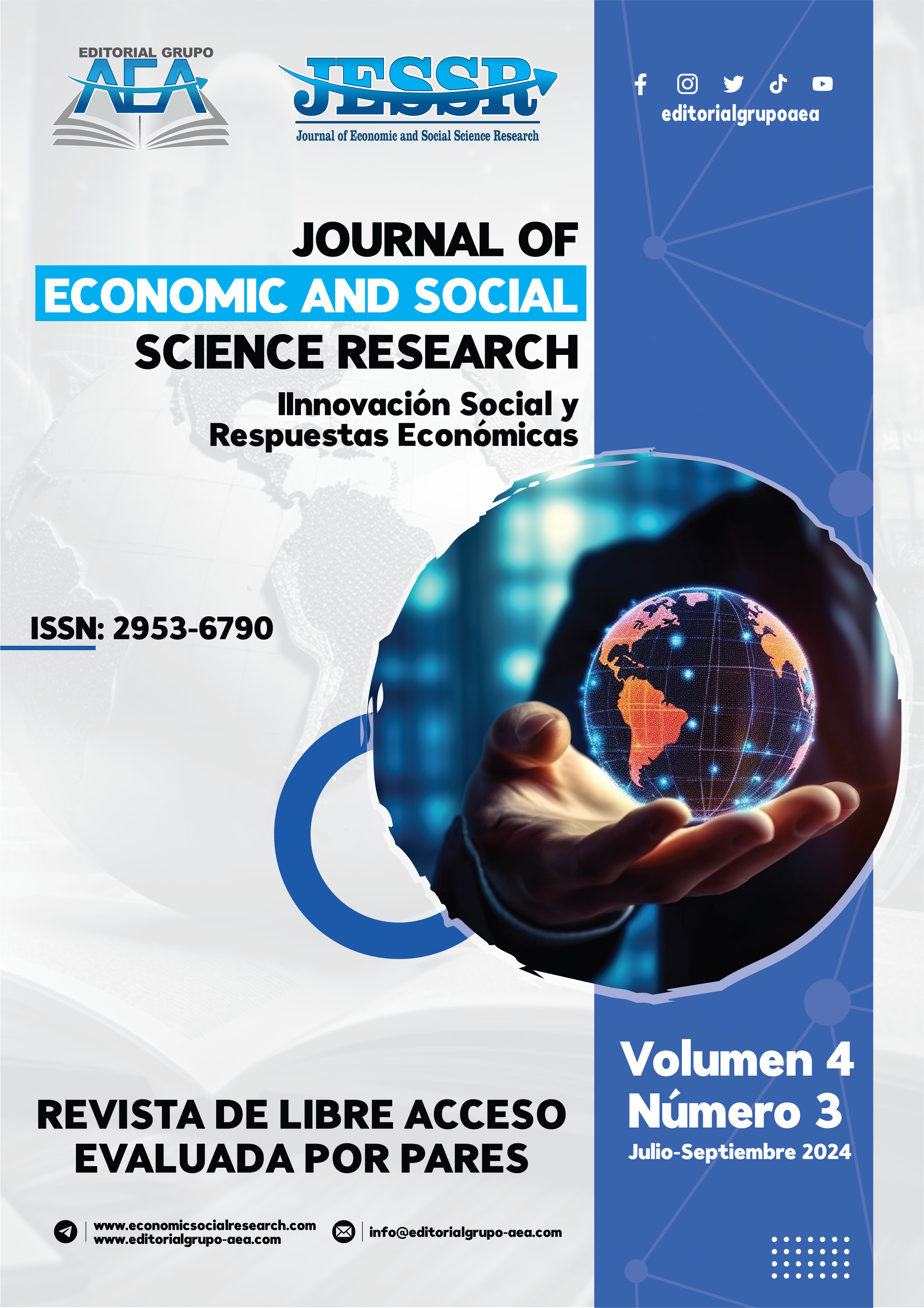Photovoltaic potential for water pumping systems for the Joa commune, Manabí, Ecuador.
Main Article Content
Abstract
Photovoltaic solar energy is one of the renewable energy options that allows us to reduce the effects of climate change. Furthermore, it is an inexhaustible source available on the planet that contributes to sustainable development. This research adopts both a qualitative and quantitative approach, with global irradiance data having been collected during the years 2012-2021, obtaining an average of 4.19788030 W/m² along with peak solar hours, which resulted in variations in the results. Subsequently, the number of photovoltaic solar panels, the inverter, the batteries and the controller required were calculated. The scheme of a photovoltaic module for a water pumping system for crops was also designed, using the Wondershare EdrawMax software. In addition, a survey was conducted among farmers to determine the daily consumption and power of the water pump they use to irrigate crops.
Downloads
Article Details
Section

This work is licensed under a Creative Commons Attribution-NonCommercial 4.0 International License.
How to Cite
References
Ballester, M. (2018). Estudio de Bombeo para instalación de riego mediante instalación solar fotovoltaica. 146. http://repositorio.upct.es/bitstream/handle/10317/7383/tfg-bal-est.pdf?sequence=1&isAllowed=y
Bucheli, J. (2016). “Diseño de un sistema de generación eléctrica, para aprovechar el potencial energético solar como fuente de energía alternativa en el bombeo de agua de riego para la finca albán de la parroquia de tumbaco, en el año 2015.”
Caballero, A. (2023). Energía solar fotovoltaica y térmica: ventajas y desventajas. Climate.Selectra.Com.
Guerrero-Calero, J., Gras-Rodríguez, R., Cruz-Macias, B., & Cabrera-Verdezoto, R. (2023). Análisis del Potencial Fotovoltaico de los Campus Universitarios de la Universidad Estatal del Sur de Manabí, Jipijapa. Digital Publisher, 1(8(6)), 333–341.
Howard, P. H. & Xu, M. (2022). Enacting the “Polluter Pays” Principle. nypirg.org
Mora, K., & González, L. (2021). Diseño De Un Sistema De Bombeo Alimentado Por Energía Solar Fotovoltaica En La Zona De Cundinamarca. In Universidad Pilñoto de Colombia. http://repository.unipiloto.edu.co/bitstream/handle/20.500.12277/10814/PG-21-1-04 Biblioteca VFinal.pdf?sequence=1
Oliveira, J. C. (2021). Stricto Sensu Municipal Environmental Taxation:(In) Admissibility in the Brazilian Legal System. Veredas do Direito.
Palacios, I., & Gauna, D. (2018). Propuesta de un sistema fotovoltaico para consumo de agua potable para la comunidad El Jotope-Masaya.
Rodríguez-Macías, D., & Vélez-Quiroz, A. (2021). Ciencias de la salud Artículo de investigación Feasibility Study of a Pumping System without Electrical Coverage in the Hoja Blanca Sector of the Flavio Alfaro Canton Estudo de Viabilidade de Sistema de Bombeamento sem Cobertura Elétrica no Setor Hoja Bla. Dominio de Las Ciencias, 7, 527–540. http://dominiodelasciencias.com/ojs/index.php/es/index
Santos, R. M. B., Sanches Fernandes, L. F., Cortes, R. M. V., Varandas, S. G. P., Jesus, J. J. B., & Pacheco, F. A. L. (2017). Integrative assessment of river damming impacts on aquatic fauna in a Portuguese reservoir. Science of the Total Environment, 601–602, 1108–1118. https://doi.org/10.1016/J.SCITOTENV.2017.05.255
Schmidtchen, D., Helstroffer, J., & Koboldt, C. (2021). Regulatory failure and the polluter pays principle: why regulatory impact assessment dominates the polluter pays principle. Environmental Economics and Policy Studies, 23, 109-144.
Vaca-Revelo, D., & Ordóñez, F. (2020). Mapa Solar del Ecuador 2019.
Zhu, L. (2023). Some thoughts on application of the polluter pays principle for controlling marine greenhouse gas emissions. Marine Policy. [HTML]
Zimpertec. (2018). Solar Panel (p. 1).





